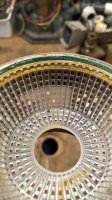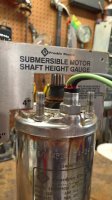I think this is why Franklin went with the new tri-seal so little amount of backpressure is being applied to the thrust bearing. I am interested in seeing how they hold up in the field.
It doesn't matter how much backpressure is on the thrust bearing as long as it has the proper cooling flow going past it. A little bit of backpressure will destroy a thrust bearing as quickly as a lot of backpressure if there isn't enough flow past the motor to keep it cool. This is why a motor shroud is important.


